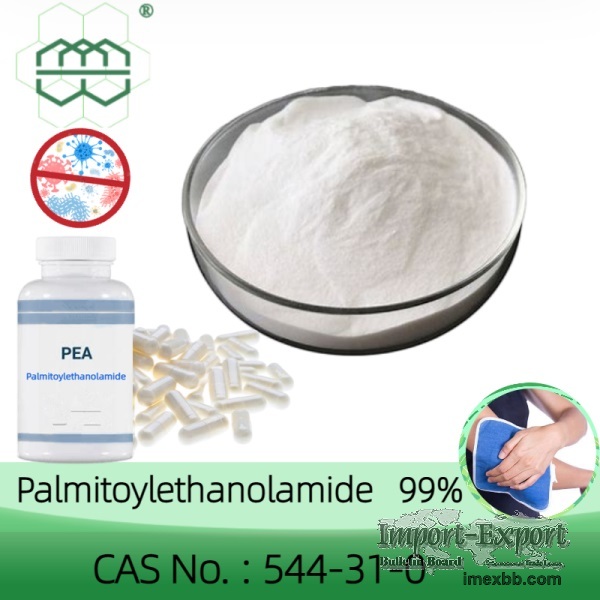 |
 |
Home > Offers to Sell > Chemicals & Plastics > Others > Others
| Contact: | Juanna Chan |
|---|---|
| Company: | Suzhou Myland Pharm & Nutrition Inc. |
| No# 262 Dongping St. SIP Suzhou CN. | |
| Suzhou 215123 | |
| China | |
| Phone: | +8651266702819 |
| E-Mail: | |
| Date/Time: | 6/19/23 3:46 GMT |
PEA CAS No.: 544-31-0 99.0% purity min. organic synthesis intermediate and
Product name:PEA
Other name:N-(2-HYDROXYETHYL)HEXADECANAMIDE;
N-HEXADE , CANOYLETHANOLAMINE;
PEAPALMIDROL;
PALMITYLET , HANOLAMIDE;
PALMITOYLETHChemicalbookANOLAMIDE
CAS No.:544-31-0
Molecular formula:C18H37NO2
Molecular weight:299.49
Purity:99.0%
Appearance:White crystalline powder
Packing:25Kg/ drum
Application:Raw materials of health care products
3Product introduction
PEA is a natural fatty acid amide formed from ethanolamine and palmitic acid, It is
also found in animal guts, egg yolks, olive oil, safflower, soy lecithin, peanuts
and other foods. PEA is an organic synthesis intermediate and pharmaceutical
intermediate, which can be used in laboratory research and development process and
chemical pharmaceutical research and development process. PEA is an endocannabinoid
receptor agonist. PEA has a wide range of potential clinical applications, but its
research and popular uses mainly focus on the anti-inflammatory and analgesic
effects of low back pain, sciatic nerve pain, osteoarthritis and other diseases.
It belongs to the lipid medium and n-acylethanolamine family. PEA inhibits the
release of pro-inflammatory mediators from activated mast cells and prevents
recruitment of activated mast cells at nerve injury sites. PEA is an endogenous
fatty acid amide, belonging to a class of nuclear factor agonists. It has been
shown to bind to nuclear receptors (nuclear receptors) and exert a great variety of
biological functions related to chronic pain and inflammation. PEA is technically
known as a "resolution-promoting lipid signaling molecule. "PEA affects
intracellular central control mechanisms that address inflammation and cellular
stress. Preclinical and human studies have also investigated its effects on
depression, enhanced mental function and memory, autism, multiple sclerosis,
obesity and metabolic syndrome.
4Feature
The health benefits of PEA include affecting immune cells that control
inflammation, especially in the brain. PEA may help reduce the production of
inflammatory substances. But PEA primarily acts on receptors on cells that control
all aspects of cell function. These receptors are called PPars. PEA and other
compounds that help activate PPArs can reduce pain, as well as increase metabolism
by burning fat, lower serum triglycerides, raise serum HDL cholesterol, improve
blood sugar control and help with weight loss.
5 Applications
PEA has been shown to have anti-inflammatory, anti-sensory injury, neuroprotective,
and anticonvulsive properties. PEA has been exploring various pain states in people
in different clinical trials for inflammatory and pain syndromes. PEA regulates
many physiological processes, including pain perception, convulsions, and
neurotoxicity.
Minimum Order: 1 bags
SOURCE: Import-Export Bulletin Board (https://www.imexbb.com/)
![]()
© 1996-2010 IMEXBB.com. All rights reserved.
|
|
|
